Right in the heart of Zaragoza, I stumbled upon Aljafería Palace—a place that honestly surprised me more than I expected. This fortress stands out as one of Spain’s best-preserved examples of Islamic architecture and later, Christian royal life.
From the moment I stepped through those massive gates, I felt the layers of history echoing all around me. The courtyards and arched hallways practically hum with stories.
Aljafería Palace is a hidden gem where Islamic art, medieval power, and royal stories come together in one unforgettable visit. The intricate geometric patterns, colorful mosaics, and peaceful gardens made me stop and just take it all in. Culture truly shaped this spot over the centuries, and you can see it everywhere.
Every wall seems to hold a secret—sometimes from its days as a Moorish palace, sometimes from when it became a Christian stronghold, or even later as a military base. Exploring Aljafería feels like walking through Zaragoza’s own living timeline.
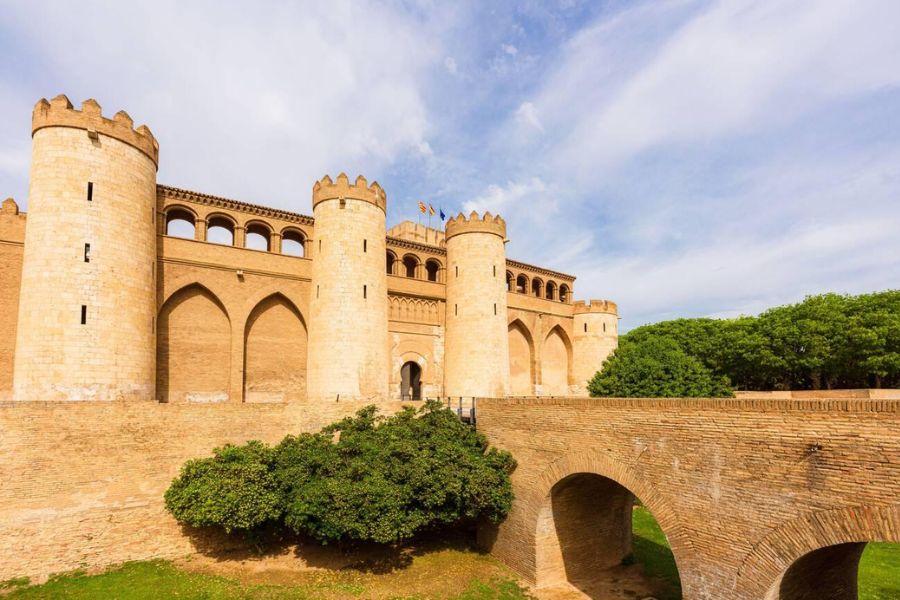
Visiting isn’t just about admiring beautiful stonework. It’s a chance to experience the blend of cultures that shaped Spain. If you’re into history, architecture, or just want a deeper connection to the past, this place is a must.
A Glimpse Into Aljafería Palace’s History
Walking through Aljafería Palace in Zaragoza feels like diving right into a living timeline. Mosaic tiles, lush courtyards, and arched doorways whisper stories of Islamic rulers, Christian kings, and centuries of transformation.
Islamic Origins and Taifa Rule
When I first saw Aljafería’s ornate arches, I could tell the place had deep Islamic roots. The Taifa kings built it in the 11th century, and the palace became the heart of arts and innovation in Zaragoza.
Islamic art covers everything here—lush geometric patterns in stucco, delicate columns, and inscriptions with poetry. The palace buzzed with poetry readings and feasts centered on local products like figs and almonds.
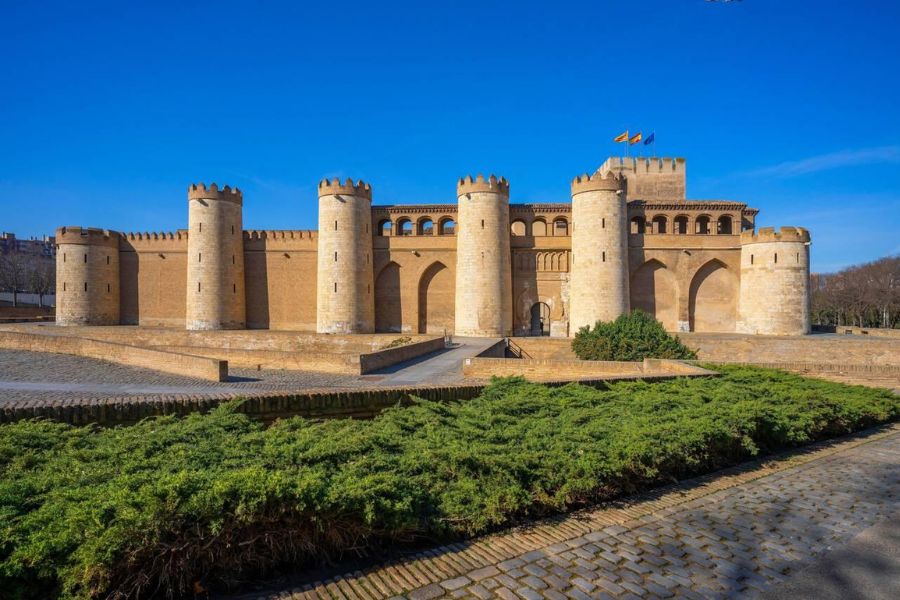
Commerce and creativity mixed here, making Aljafería a real hub in its time. When I stroll the prayer room or look out over the gardens, I can almost hear poets reciting verses.
Aljafería as a Royal Palace
The palace’s story changed when Christian forces led by Alfonso I of Aragon took Zaragoza in the 12th century. I noticed right away how the building itself shows these changes—grand halls with high ceilings, stained glass, and those heavy wooden doors.
It became the main city palace for the Aragonese monarchy. Royal ceremonies and political decisions happened here, shaping the region’s fate. Even Spanish kings lived at Aljafería before Spain unified under the Catholic Monarchs.
Key Features:
- Throne rooms with Gothic touches
- Decorative ceilings painted during later renovations
- Spanish coats of arms layered onto the original Islamic designs
Whenever I wander these rooms, I feel the palace’s role as both a center of power and a home for daily royal life.
Transformations Through the Ages
Aljafería kept changing as Spanish history unfolded. After its royal days, it became barracks, took damage during wars (even World War II), and served as a courtroom. I love seeing how each era left its own mark.
During Spain’s colonial past, you can see symbols of power shift as the country expanded. The palace shows off a blend of Moorish, Gothic, and Renaissance architecture—a real palimpsest, every layer with its own story.
Modern renovations saved those ornate details, so visitors like me get to see echoes from Muslim poets all the way to Spanish rulers. Today, Aljafería houses the Aragonese Parliament, blending historical wonder with living government.
Wandering these halls, I’m reminded how Zaragoza’s spirit always adapts—turning challenges into beauty and resilience.
Architectural Marvels and Artistic Wonders
Every time I walk into Aljafería Palace, I’m honestly awestruck. Moorish arches, colorful patterns, and a creative mix of design details fill every corner. The history is everywhere, from carved wooden ceilings to gardens bursting with fruit trees and flowers.
The Iconic Artesonado Ceilings
I can’t help but stare at the artesonado ceilings here. Muslim craftsmen built these carved and painted wooden masterpieces with incredible care. Their geometric patterns and vibrant colors rival anything I’ve seen at the Alhambra or in Toledo’s old monasteries.
If you stand underneath and look up, you’ll spot stars, floral motifs, and repeating designs that seem endless. The morning sunlight makes every detail glow. The woodwork—cedar or pine, usually—has lasted for centuries.

Some rooms even mix Islamic designs with later Christian symbols, telling the palace’s long, layered story.
Intricate Gardens and Courtyards
The palace gardens give me a real sense of peace. Mediterranean plants—pomegranates, peaches, grapevines—dot the paths. Fountains spray cool mist, and birds dart among palm trees and orange blossoms.
Courtyards like the Patio de Santa Isabel bring shade and beauty right to the heart of the fortress. They remind me of the Alhambra’s gardens. I love sitting under the trees, listening to water trickle, and imagining the caliphs and kings who once relaxed here.
The gardens make the palace feel alive and welcoming, turning strong walls into a place of calm.
Notable plants you’ll often spot:
- Pomegranate trees
- Grape vines
- Peach trees
- Aromatic herbs (mint, rosemary, lavender)
Moorish and Christian Fusion
The palace’s story is written in stone, plaster, and wood. Rooms blend Islamic geometric carvings with later Christian touches like Gothic windows and murals.
Builders didn’t erase the past—they just added to it. For example, the main prayer hall features Islamic arches and mihrabs, while nearby chapels appeared during Christian rule. The palace’s towers show Islamic star designs right next to medieval Spanish symbols.
If you know the Alhambra, you’ll see the same layering—Christian cathedrals over old palaces, Islamic designs reused in monasteries. At Aljafería, this mix makes the whole place feel unique, almost like a living museum of Mediterranean architecture.
Experiencing the Palace Today
My journey through Aljafería Palace felt like diving into layers of Zaragoza’s past and present. Walking its halls, I got more than just an architecture lesson—I found lively events, friendly guides, and fun activities for all ages.
Guided Tours and Visitor Tips
Booking a guided tour was honestly the best choice. The guides brought the palace to life, sharing stories about its Moorish days, royal life, and the Inquisition.
They pointed out carved arches, geometric tiles, and the imposing Torre del Trovador. Outside, the gardens surprised me. I wandered under orange trees and cooled off by the fountains—a peaceful break from city noise.
The guides suggested visiting on weekday mornings to avoid crowds. I appreciated the clear signs in both Spanish and English.

Buying my ticket online let me skip the line. From there, I could walk to Zaragoza’s best plazas, museums, and parks. The palace’s central location makes it easy to see more of the city in one day.
Seasonal Festivals and Cultural Events
Aljafería Palace really comes alive during festivals. I timed my visit for Zaragoza’s Fiestas del Pilar in October. Music echoed through the palace, and local performers filled the gardens and plazas with dance.
The place buzzed with excitement—people chatted about poetry, shared tapas, and celebrated soccer wins. During other seasons, I noticed art exhibits popping up in palace halls.
The city museum sometimes teams up with the palace for special events, like historical reenactments or open-air concerts. These festivals turned my walk through the fortress into a celebration, not just a history lesson.
If you’re planning a visit, check the palace’s website for events. Booking ahead is smart—some concerts and tours sell out fast, especially in spring and autumn.
Family-Friendly Exploration
Visiting with kids is easy. The staff handed out activity booklets at the entrance—little challenges that led us to trace mosaic patterns, find carvings, and solve riddles about the palace’s rulers.
My favorite part was the gardens, where kids ran between hedges while I took a break by the fountain. The palace grounds are stroller-friendly, and benches sit near the main courtyard.
Interactive displays and QR codes let us scan for short, kid-friendly videos about Zaragoza’s history. On hot days, the shaded garden paths gave us a cool escape.
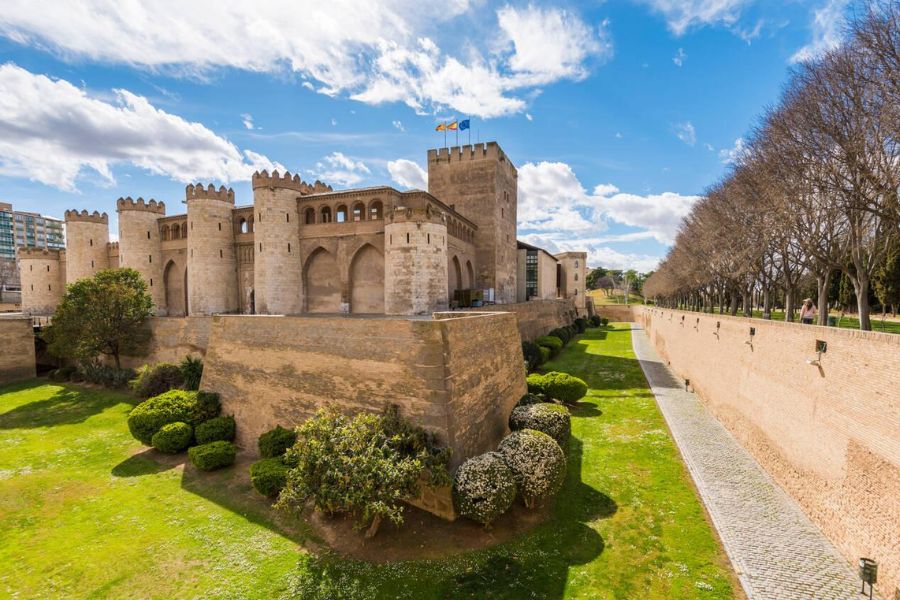
After the palace, we headed to a nearby park for a picnic. We finished the day strolling around city plazas, mixing history, nature, and family time in the heart of Zaragoza.
Aljafería Palace and Its Place in Zaragoza
Aljafería Palace rises above Zaragoza, surrounded by lively plazas and old neighborhoods with deep roots. Visiting this area means seeing not just one monument, but a whole collection of historic and memorable spots.
The Palace’s Neighborhoods and Plazas
When I first walked the area around Aljafería, I noticed how it sits just west of Zaragoza’s city center. The palace is close to the barrio of Delicias, full of local shops and cafes.
The area felt safe and welcoming, with wide streets that made exploring on foot easy. Plaza del Portillo is a quiet, tree-lined square where locals gather.
Not far away is Plaza de la Seo, home to Zaragoza’s cathedral, La Seo. The cathedral’s tall tower stands out and makes a great landmark.
Strolling between these plazas, I passed old stone houses and small tapas bars. The mood here is relaxed compared to the busy city center.
You can see the mix of Muslim, Christian, and Jewish influences as you wander. History pops up everywhere—from city walls to arches over narrow lanes.
Benches and shaded corners invite you to slow down and soak it all in.
Nearby Must-See Attractions
From Aljafería, several top sights are an easy walk away. I really recommend La Seo Cathedral. Its Gothic and Mudéjar styles reflect centuries of cultural change, and the artwork inside is stunning.
Just a few minutes further is Plaza del Pilar, the city’s most famous square. Here you’ll find the grand Basilica del Pilar, another Zaragoza icon.
The river runs close by, and walking along the banks gives a quiet view of the city skyline.
If you’re up for a day trip, the Monastery of Montserrat is possible from Zaragoza, though it’s better known in Catalonia. Cities like Toledo and Granada get compared for their Islamic heritage, but Aljafería tells its own unique story in Aragon.
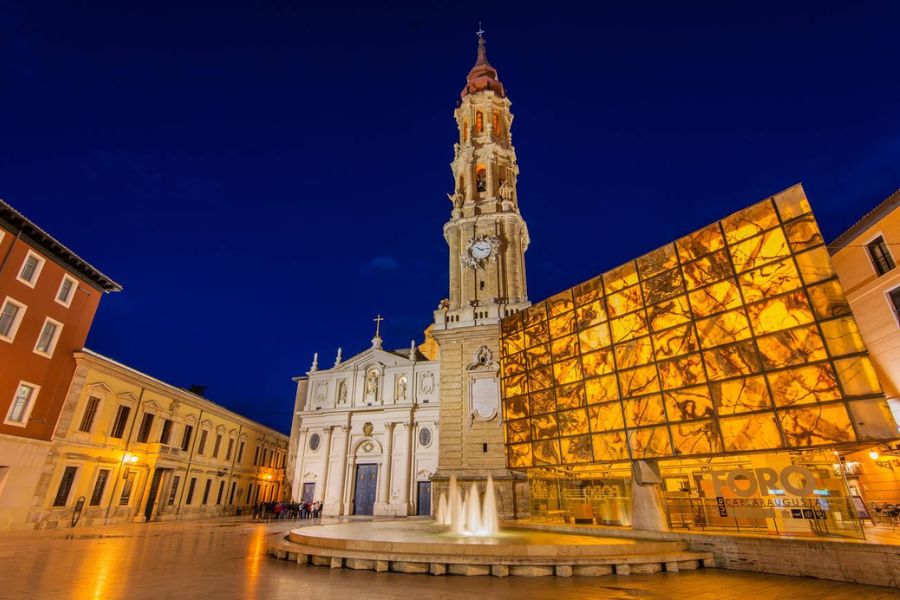
Exploring these nearby sites gives more context to the palace’s place in Spain’s history. The area around Aljafería makes it easy to discover both famous and lesser-known gems.
Tastes and Treasures Around the Fortress
Exploring Aljafería Palace pulled me right into Zaragoza’s daily rhythms. Just steps from ancient walls, I found lively markets, tempting cafés, and shops filled with local artistry.
Local Cuisine and Coffee Spots
As I wandered outside the palace, the smell of roasted almonds and fresh coffee pulled me in. Nearby cafés whip up Spanish favorites like tostada con tomate for breakfast and serve crispy churros with thick chocolate.
Local bakeries tempt you with fig pastries and almond sweets—perfect for a quick snack. The olive oil here? It’s something special. People drizzle it over bread or pair it with local cheese, and honestly, it’s a treat.
For lunch, I went for ternasco (Aragonese roast lamb) and Migas. Both dishes really highlight the region’s flavors.
Coffee culture runs deep here. I stumbled into small spots buzzing with conversation, where they serve coffee and sweet turrón made from local almonds.
Here’s a quick table of my favorites if you’re curious:
| Dish/Drink | What to Expect |
|---|---|
| Ternasco | Slow-roasted lamb, tender |
| Migas | Fried bread crumbs, savory |
| Fig Pastries | Sweet, fruity, seasonal |
| Café con leche | Strong coffee, creamy milk |
Handcrafted Textiles and Souvenirs
When I went shopping for souvenirs, I looked for things that would really remind me of Zaragoza’s heritage.
Local textile shops had these colorful shawls with detailed embroidery, and I even found linen scarves made right in the region.
You’ll spot lacework and handwoven fabrics everywhere—those stalls are hard to miss.
I noticed a lot of displays showing off jewelry made from tiny pieces of amber. It’s something you don’t see every day and actually makes a pretty unique gift.
Some shops had olive-wood boxes and cutting boards, all carved by hand. No two looked exactly alike, which I loved.
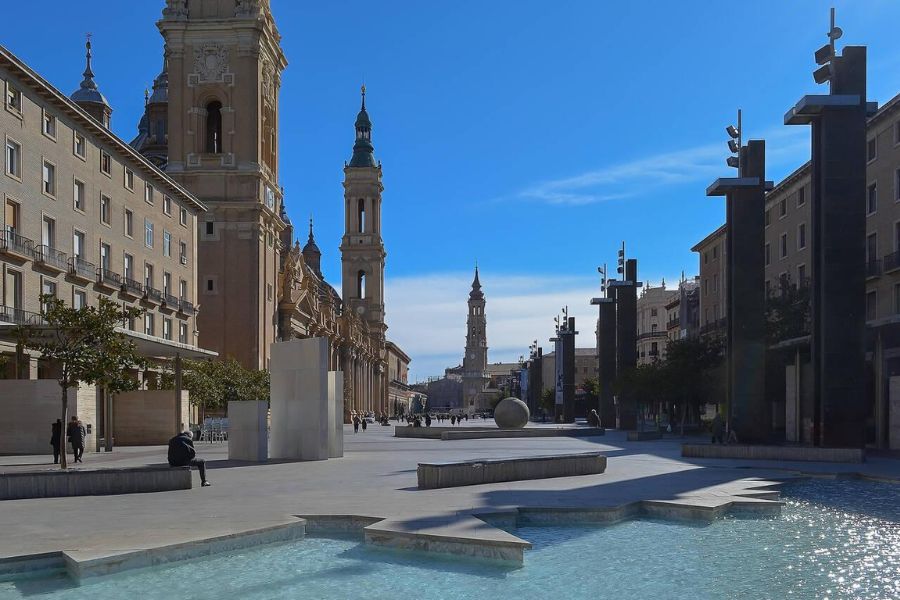
At a few market stalls, baskets overflowed with almonds and dried figs. They’re so easy to bring home and share with friends.
When you buy gifts here, you support local commerce and get to keep a little piece of Zaragoza’s history.
If you’re into markets, try to visit on a busy weekend. The whole area just buzzes with energy and there’s always something new to find.

